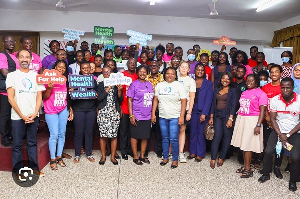The Ghana Health Service (GHS) has expressed alarm over the increasing prevalence of cesarean sections (CS) during birth in the country.
The revelation, highlighted in the 2022 Ghana Demographic and Health Survey (GDHS) report, underscores a concerning trend in maternal healthcare.
According to the GHS, the nationwide Caesarean section, also known as C-section, the rate has reached 21%, a figure deemed quite high compared to the WHO's suggested 15% benchmark for acceptable CS rates at the population level.
The data from the 2022 GDHS report reveals that one in every five women delivers through CS, pointing to a notable departure from the recommended standards, and raising concerns about potential overuse and associated health implications.
The WHO recommends a 15% rate of cesarean sections as optimal for ensuring the health and well-being of both mothers and babies.
According to the Deputy Director of Reproductive and Child Health at the GHS, Dr. Chris Opoku Fofie, “The more we have women delivering through Caesarean section, the more burden is put on the health system and those that might need the intervention to survive would not get it in a timely manner".
“We want to have Caesarean section, but there should be a way to ensure that those who need Caesarean section most are those getting it but not as a remedy for all other women who come around. If you don’t need it and you get it, you deprive others from getting the life-saving intervention,”
Health experts have emphasised the importance of scrutinising the factors contributing to the rising CS rates in the country. It is crucial to understand whether the increase is driven by medical necessity or other factors, such as maternal choice, healthcare provider practices, or systemic issues within the healthcare sector.
Efforts to address the issue may involve targeted interventions, including improved maternal education on delivery options, and enhanced training for healthcare providers on the appropriateness.
Health News of Thursday, 25 January 2024
Source: classfmonline.com

















